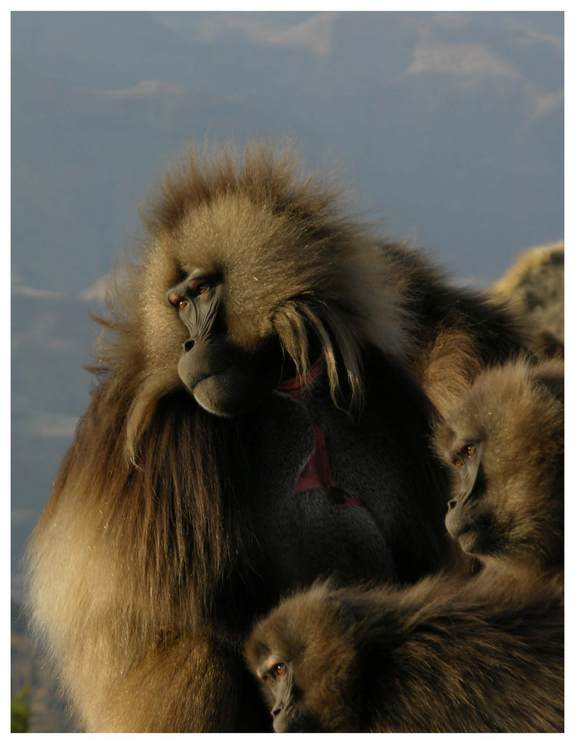Monkey Lip-Smacking Resembles Human Speech

The lip-smacking vocalizations gelada monkeys make are surprisingly similar to human speech, a new study finds.
Many nonhuman primates demonstrate lip-smacking behavior, but geladas are the only ones known to make undulating sounds, known as "wobbles," at the same time. (The wobbling sounds a little like a human hum would sound if the volume were being turned on and off rapidly.) The findings show that lip-smacking could have been an important step in the evolution of human speech, researchers say.
"Our finding provides support for the lip-smacking origins of speech because it shows that this evolutionary pathway is at least plausible," Thore Bergman of the University of Michigan in Ann Arbor and author of the study published today (April 8) in the journal Current Biology,said in a statement. "It demonstrates that nonhuman primates can vocalize while lip-smacking to produce speechlike sounds."
Lip-smacking — rapidly opening and closing the mouth and lips — shares some of the features of human speech, such as rapid fluctuations in pitch and volume. [See Video of Gelada Lip-Smacking]
Bergman first noticed the similarity while studying geladas in the remote mountains of Ethiopia. He would often hear vocalizations that sounded like human voices, but the vocalizations were actually coming from the geladas, he said. He had never come across other primates who made these sounds. But then he read a study on macaques from 2012 revealing how facial movements during lip-smacking were very speechlike, hinting that lip-smacking might be an initial step toward human speech.
To investigate this scenario himself, Bergman analyzed recordings of the geladas' wobbles. He found that the rhythm of these wobbles closely resembled that of human speech. Specifically, the wobble resulted from a male making a "moan" (something geladas produce by vocalizing while inhaling and exhaling) and lip-smacking. The lip-smacking movements corresponded to the mouth movements made during human speech.
An example of a call involving complex facial movements is the "girney" vocalization in macaques. These are thought to be produced by lip movements and teeth chattering, but evidence suggests the movements and sound don't occur at the same time. By contrast, the gelada lip-smacking and vocalizing seem to happen concurrently.
The findings suggest lip-smacking represents a possible pathway in the evolution of speech, though not the only one, Bergman said. In addition, lip-smacking may also serve a purely social function, just like human conversations.
Follow Tanya Lewis on Twitter and Google+. Follow us @livescience, Facebook & Google+. Original article on LiveScience.com.
10 Things That Make Humans Special
Copyright 2013 LiveScience, a TechMediaNetwork company. All rights reserved. This material may not be published, broadcast, rewritten or redistributed.

